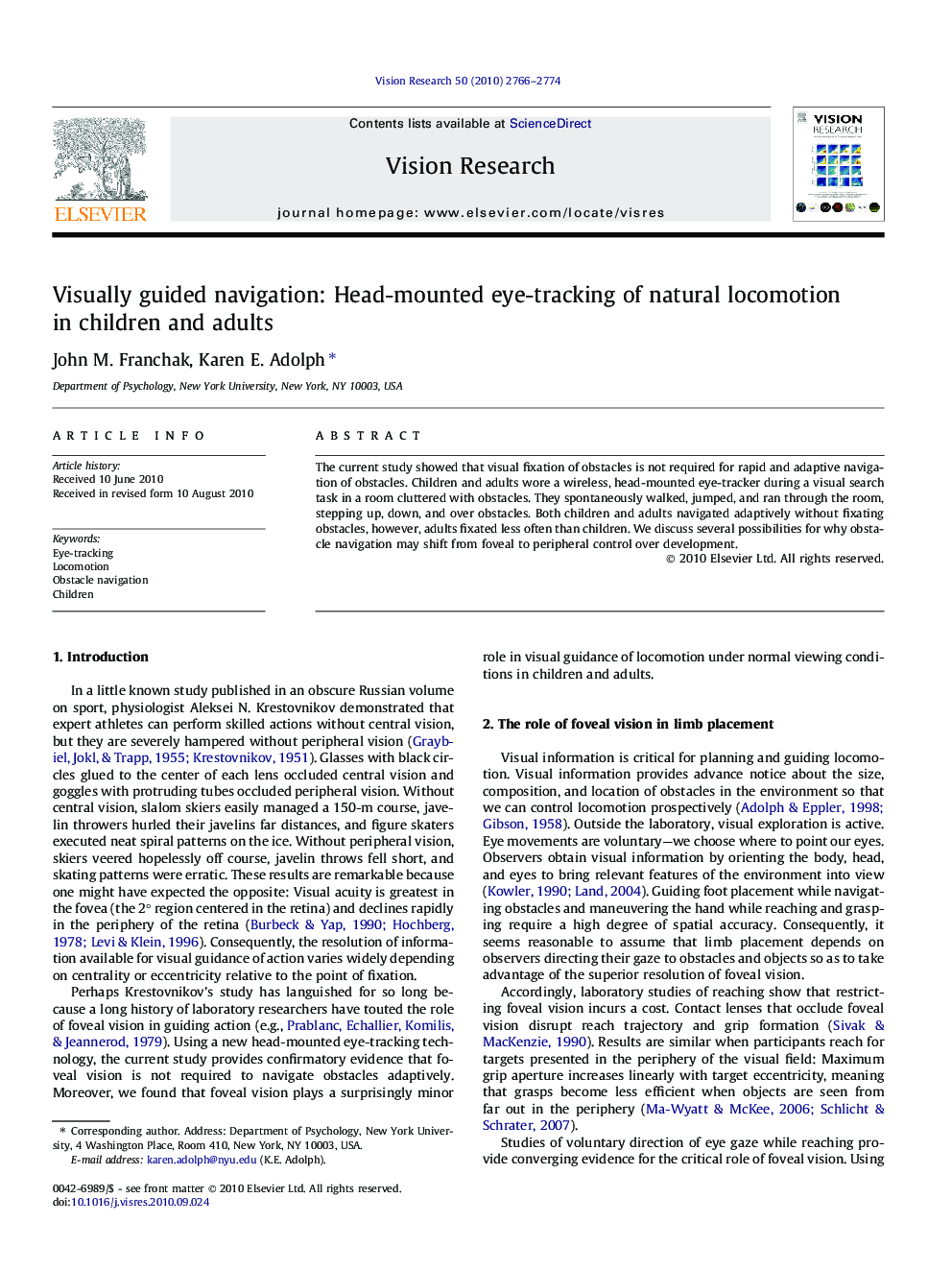| کد مقاله | کد نشریه | سال انتشار | مقاله انگلیسی | نسخه تمام متن |
|---|---|---|---|---|
| 4034231 | 1603243 | 2010 | 9 صفحه PDF | دانلود رایگان |

The current study showed that visual fixation of obstacles is not required for rapid and adaptive navigation of obstacles. Children and adults wore a wireless, head-mounted eye-tracker during a visual search task in a room cluttered with obstacles. They spontaneously walked, jumped, and ran through the room, stepping up, down, and over obstacles. Both children and adults navigated adaptively without fixating obstacles, however, adults fixated less often than children. We discuss several possibilities for why obstacle navigation may shift from foveal to peripheral control over development.
Research highlights
► Children and adults spontaneously walked up, down, and over obstacles while wearing a specially designed wireless, head-mounted eye-tracker.
► Both children and adults can navigate obstacles adaptively without relying on fixations of obstacles during approach.
► Children rely on fixations more than adults.
Journal: Vision Research - Volume 50, Issue 24, December 2010, Pages 2766–2774